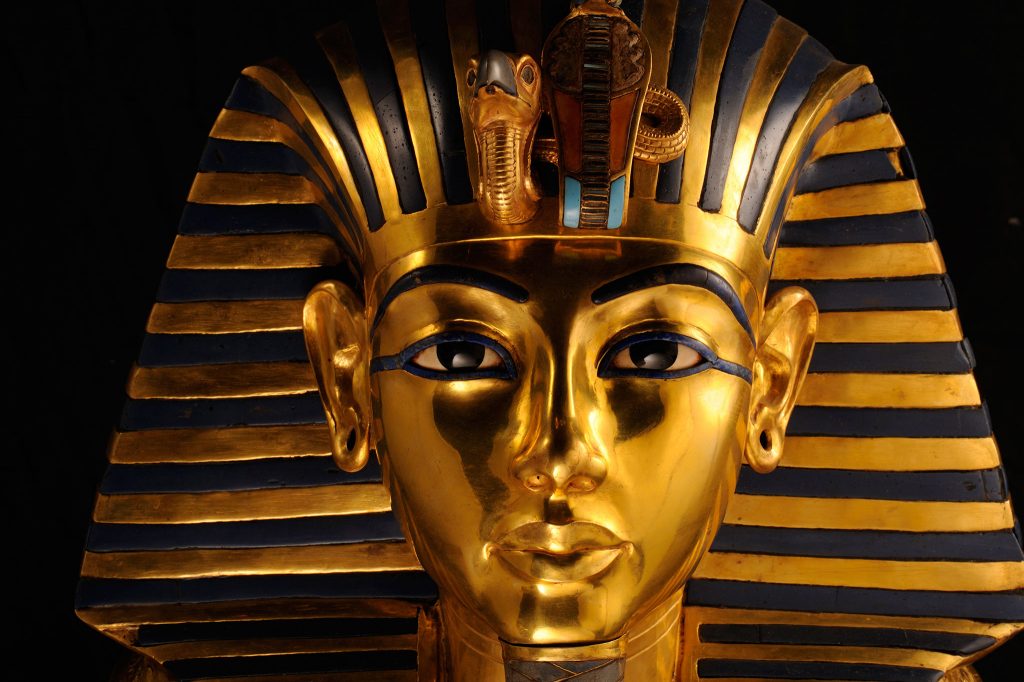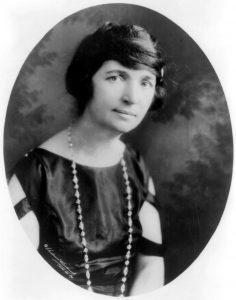Thanks to modern technology, the examination and research into mummified bodies and artifacts from ancient Egypt have answered many questions for scientists and historians alike. What was the culture of these ancient people? Who were their leaders? And what was the process and purpose of mummification? In the twentieth century, the tomb of King Tutankhamen was discovered, and that discovery has answered many of these questions. Thanks to the discoveries of the Ancient Egyptian’s burials of their kings, particularly that of King Tutankhamen, we have learned more and more about the Ancient Egyptian’s history and traditions when it comes to laying the dead to rest.

Scientists and archaeologists say that King Tutankhamen became king at the very young age of nine. However, he may have been no more than a puppet ruler, and the true power behind the throne was said to belong to a man who may have been related to Tut named Ay. Young Tut was a physically frail youth. Through the examination of his body, scientists have found malformations in his feet, and they suspect that the young man had walked with a cane.1 Though he was depicted as fighting in battles and slaying enemies in drawings on the walls of his tomb, there is no actual evidence that this young man participated in any actual battles. However, scholars believe that these depictions merely represent an extension of Tut’s power. It was believed that he married his half-sister, Anthesenpaaton, who was also very young. Though the two had not produced any known heirs, the bodies of two babies were found buried in Tut’s tomb. Archaeologists believe these babies may have been the children of young Tut and his queen.2 He reigned during a period of time known as the New Kingdom. At the young age of eighteen, Tut’s short life and reign over Ancient Egypt had come to an end. The exact cause of Tut’s death remains a mystery; however, scientists believe it may be connected with an infection spread by a broken leg.3
In 1922, the tomb of King Tut was discovered. This finding helped give archaeologists an understanding of the wealth of Egyptian civilization, especially for those living in the upper class. The value of the gold and treasure found in King Tut’s tomb, as was the case for treasures found in other areas of ancient Egypt, surpass that of many others discovered from ancient times. It also has given scientists and researchers much insight into the history, tradition, and science behind the process and purpose of mummification.4
Scholars have discovered that mummifying bodies was tied to the ancient Egyptians’ belief about the afterlife. Egyptians believed that the body was not just a corpse after death, but a resting place for the soul. Osiris, the god of the resurrection and a very respected god to the Egyptians, would judge the soul of the dead.5 Because the Egyptians believed the soul would move on, King Tut’s final resting place was filled with tools and items that the King might need in the afterlife. It contained artifacts such as clothing, musical instruments, jewelry, lamps, chairs, and baskets with food and wine. In addition to the tomb itself, much has been discovered from bodies that were laid to rest so many years ago, including the body of King Tut. The success of the preservation can be accredited to the detail that the ancient Egyptians provided during the process of mummification. Through many years of research and observation, scientists and archaeologists have found that this important practice evolved over time, but it has followed the same basic instructions and procedures.6 After his death, all of Tut’s organs were removed from the body, except the heart, and placed into containers called Canopic Jars. Afterwards, Tut’s body was then covered in a mixture called natron, which consisted of salts that helped inhibit bacterial activity and dehydrate the body. After a little over a month, the mixture of salts was removed from Tut’s body and his cavities were filled with cloth containing resin to give the corpse its shape back. Only after this was the body wrapped with linen, giving it the classic “mummy” appearance. Tut was then placed in a solid gold coffin, and the coffin was then placed in his tomb.7
Traditionally, it was only emperors, kings, and members of the upper class who were mummified, but as time progressed it became a tradition for many members of this ancient society.8
However, because Tut was a king, his resting place was filled with ancient artifacts and treasures in addition to his mummified corpse. Although his reign, and his life, were cut very short, the ancient Egyptians left more than a final resting place for the boy King’s soul when they laid him to rest: they left us, the people of the 21st century, with answers.
- Phillip A. Mackowiak, Diagnosing Giants:Solving the Medical Mysteries of Thirteen Patients Who Changed the World (Oxford: Oxford University Press, 2013), 3. ↵
- Salem Press Biographical Encyclopedia, January 2015, s.v. “Tutankhamen,” by Donald C. Simmons. ↵
- Salem Press Biographical Encyclopedia, January 2015, s.v. “Tutankhamen,” by Donald C. Simmons. ↵
- G. Elliot Smith, Tutankhamen and the Discovery of His Tomb (Routledge: Hoboken, 2013), 1. ↵
- E. A. Wallis Budge, Egyptian Religion : Egyptian Ideas of the Future Life, Routledge Revival (London: Rutledge, 2013), 41. ↵
- Salem Press Encyclopedia of Science, January 2015, s.v. “Mummification,” by James L. Robinson ↵
- Salem Press Biographical Encyclopedia, January 2015, s.v. “Tutankhamen,” by Donald C. Simmons. ↵
- George Hart, Ancient Egypt (New York: DK Publication, 2008), 1. ↵



87 comments
Dayana Manley
I loved reading your article, ancient Egypt history has always been my favorite. They were always peaceful until they were attacked. But even then they were still somewhat peaceful. But I never knew that King Tut became a king at such a young age. Reading your article allows me to go back through other I’ve read and try and figure out how young they became kings. I also want to ask you if you know if King Tut’s tomb was robbed like the other kings.
Rebekah Esquivel
I love the ending of this article. The way it wraps up the whole article and gives a very good conclusion to the text. I never knew the story of King Tut. I find it very interesting that just by studying his body and his tomb they were able to figure out so much about him and his life. I think it’s pretty cool that his corpse can show that he had malformations and people could even tell he walked with a cane just from his corpse.
Lauren Castillo
Fascinating from beginning to end. This article on king Tutankhamun was so much more than I expected. The scope and detail in this article really helped me fill in some of my notes. I was shocked to find out ancient Egyptians would stuff the cavity to give the corpse its shape and it was also a surprise that he married his sister. Overall, I was amazed that a king so young and with such a short reign would have such a big impact in science and history.
Brianda Gomez
Who knew a 9-year-old boy could be king and rule ancient Egypt. Before reading this article, I did not know much about the process of mummification. It is crazy to think that at such a young age a boy would become king or even get married and have a family. Today, we know about Ancient Egypt and their culture with help from scientist and archaeologists. Treasures, musical instruments, food, wine, and other tools were just some of the objects placed in Tut’s tomb that could be useful to him at his afterlife. This was an interesting, informative article that I enjoyed reading.
Maria Callejas
What a well-written article! Thanks to your content I was able to expand my understanding of not only King Tutankhamen, but about what mummification meant for the early Egyptians society. It really shows how advanced this civilization was on the understanding of the human body, specifically how they were able to preserve corpses. Also, what a great way to finish your article! It definitely depicts how the discovery of Tutankhamen tomb was the best evidence of the early Egyptians’ life.
Amanda Figueroa
I knew that King Tut was young, however, I did not know that he had power at the age of nine. This article explains well how King Tut was depicted and it was very interesting to read that he had a deformity in his foot. I also like how the process of mummification was well described and this explains why we know so much.
Alexandria Martinez
Such an interesting article, I find the practice of mummification to be very interesting and always love to learn more about it. King Tut is a very famous individual, however, I did not know that he was very frail, I always imagined him to be normal for his age, and this article cleared that up for me. Another thing that I didn’t know was that King Tut could have been a “puppet ruler”, it would make sense because he was so young and so frail.
Thomas Fraire
I know nothing about king Tut coming into this, but its crazy to think that a 9 year old was souped to looking after an entire nation. When I was 9 my mom had to hire someone to teach me to tie my shoes so the fact the an entire nations fate was in the hands of a 9 year old is crazy. Its also intreating that the Egyptians burry the dead with riches it seems like a waste, because they are dead it not like they need any of that stuff.
Alexis Renteria
Very interesting article. It doesn’t surprise me that King Tut could have been used as a puppet by another person. I wouldnt think that a teenager could bear the responsibilities of being a ruler, and he would certainly need assistance in ruling an empire. Its also amazing that scientist could learn so much from just a coffin. Furthermore I can see how we have accommodated to these traditions of burying the dead.
Mario De Leon
This was an interesting article to read. I liked the questions the author used in her introduction paragraph. It blows my mind all the things science can tell use from examining tombs. I have heard of Tutankhamen but I did not know that he could have been a puppet ruler. Science can teach us a lot about the life of a person or about the society the mummified person lived in.